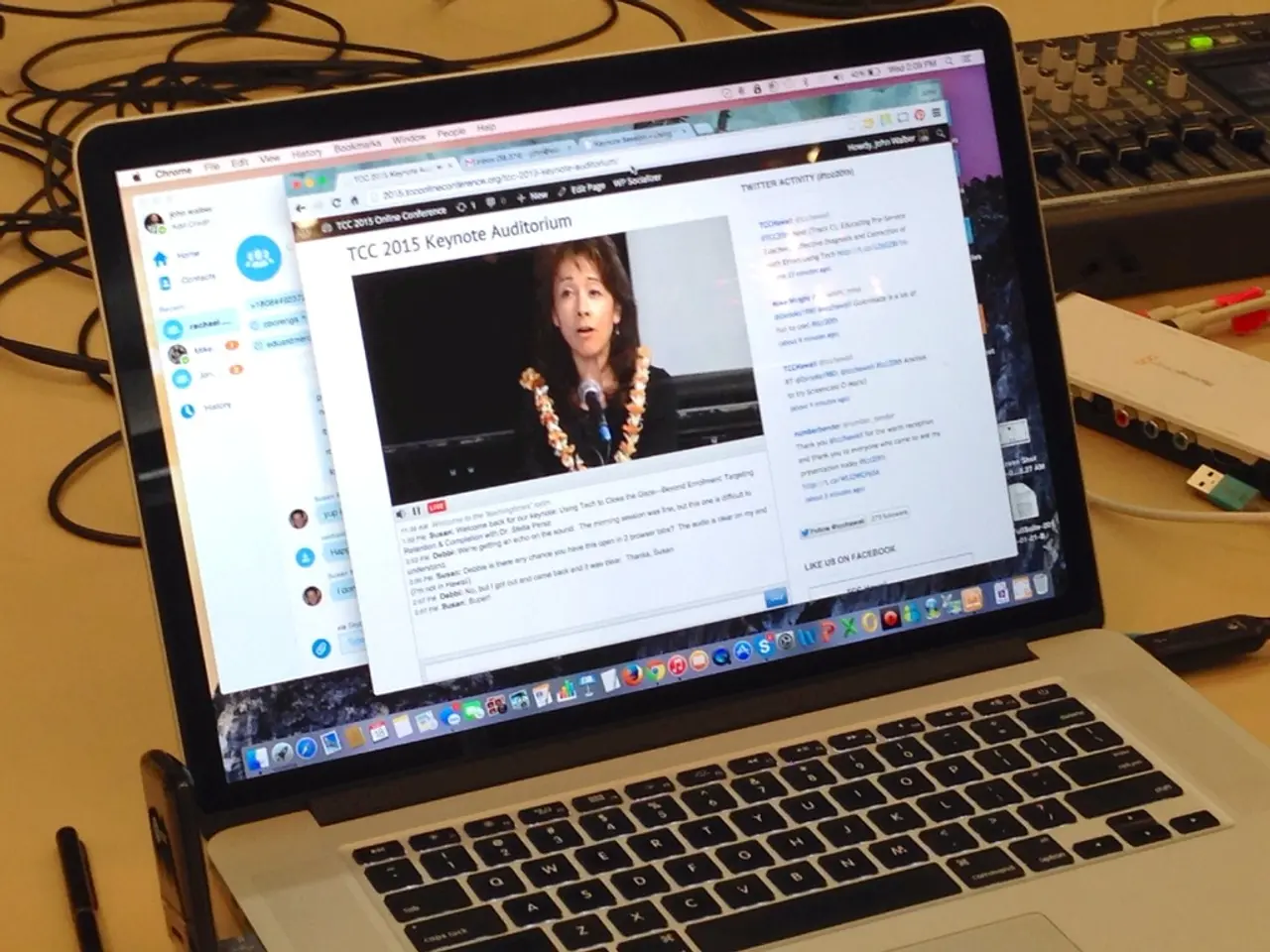Intel to significantly reduce workforce by the end of the year due to a pessimistic outlook in the semiconductor industry
Intel Reports Q2 Loss Amid Uncertain PC Market and Restructuring Costs
In a surprising turn of events, Intel Corporation, the world's largest chipmaker, reported a second-quarter loss of 67 cents per share, significantly steeper than analyst estimates of a 26-cent-per-share loss. This marks a departure from the company's previous four quarters of sales declines.
The tech giant's adjusted losses were 10 cents per share, compared with estimates of a profit of 1 cent per share. However, Intel's second-quarter revenue for the period ended June 28 was $12.9 billion, beating estimates of $11.92 billion.
The uncertain growth in the PC market is contributing to this volatility. Customers are pulling shipments forward to the first half of the year amid ongoing trade negotiations, creating a ripple effect in the industry.
Despite these challenges, Intel expects revenue of $12.6 billion to $13.6 billion for the September quarter, with a midpoint of $13.1 billion, higher than analysts' average estimate of $12.65 billion. The company also anticipates a third-quarter loss of 24 cents per share, steeper than estimates of losses of 18 cents per share.
Intel's restructuring costs in the second quarter were $1.9 billion, a significant portion of which came from job cuts. The company plans to reduce its workforce to 75,000 by the end of 2021, down from 99,500 at the end of 2024.
The new CEO, Lip-Bu Tan, who is leading the company through a historic transformation, is steering Intel away from the 18A technology, a move that his predecessor Pat Gelsinger had spent billions of dollars to develop. Instead, Tan is focusing on a next-generation chipmaking process called 14A to win big external customers.
Tan's leadership has brought a wave of optimism to Intel investors. The company's shares have increased by 14% this year due to investor hopes that Tan can undo years of strategic mistakes.
Notably, Intel sold a 51% stake in its Altera programmable chip business for $4.46 billion in April. The move was part of Tan's strategy to streamline the company's operations and focus on its core business.
PC shipments rose 6.5% in the June quarter according to data from International Data Corporation, offering a glimmer of hope for the industry. However, Intel and its fellow chipmakers are facing customers who are reluctant about spending commitments amid widespread macroeconomic uncertainty.
Semiconductors are currently exempt from President Trump's sweeping global tariffs, providing a temporary reprieve for the industry. However, the ongoing trade tensions continue to cast a shadow over the sector.
In conclusion, Intel's second-quarter results reflect the challenges faced by the tech industry in the current economic climate. Despite the setbacks, the company is making strategic moves to turn things around under the leadership of its new CEO, Lip-Bu Tan.
Read also:
- EA Relies on Madden and Battlefield to Drive Microtransactions Recovery
- Expense for Creating a Digital Platform for Fantasy Sports
- AI-Enhanced Battery-Swapping Station in Southeast Asia Officially Opens Its Doors
- Honda unveils blueprint for design, advanced driver assistance systems, electric vehicles, fuel efficiency, and technology development







